New Wave in Chicago, Los Angeles, and Minneapolis – Regional Scenes and Hidden Gems
New wave wasn’t just NYC and London.
Listen here, or read on!
Intro
New wave wasn’t just a New York or Boston thing—it radiated out across the country, seeding regional scenes with local weirdos, hookmasters, and synth lovers. I’d never heard any of the bands below before researching this piece, but discovering them felt like opening a time capsule. These artists didn’t top the charts, but captured the spirit of new wave in electric ways. Here's a look at six underground bands from Chicago, LA, and Minneapolis that deserve another spin. And which archetype they fit best in ($).
Chicago area
Chicago’s new wave scene was eclectic and gritty, blending theatrical provocateurs and power-pop traditionalists across a backdrop of street fests, dive bars, and underground acclaim.
Skafish
Archetype: Art-Pop Eccentrics
Jim Skafish formed a new wave band and titled it with his last name. Like Falco, Skafish was classically trained. He used this and his disdain of his Catholic upbringing to delver an organ-based, eclectic, confrontational brand of new wave. And with his penchant for performance art, Skafish delivered the weird in large amounts (Oingo Boingo have nothing on them!). Songs like Sign of the Cross skewered the Church with dark humor and church-organ irony. He opened for heavyweights like the Police and XTC (sometimes stealing their thunder in the process). This was through his intense music, an intentional hunchback posture and refusal to wear shoes or socks. All this deep-sixed any chance of getting mainstream radioplay. Nevertheless, he was embraced by the Chicago underground scene. He was a favorite among LGBTQ fans for his theatrics and defiance.
Skafish - Sign of the Cross (listen on Spotify)
The Kind
Archetype: Power-Pop and Skinny Tie Brigade
In contrast to Art-Pop Eccentrics like Skafish, the Chicago new wave scene also host to Power-Pop Brigade bands like the Kind. Similar to new wavers the Romantics with their crunchy guitars and skinny ties, the Kind had two albums with polished production, tight harmonies and upbeat melodies. Guitars were prominent, but synths were judiciously used for flourish. They had a Chicago hit in 1982 with the slower-paced Loved By You. Upon hearing it, I immediately thought of Stevie Nick’s solo hit Stop Draggin’ My Heart Around that came out a year prior. But they had a lot of range, evidenced by the faster-paced Total Insanity (my favorite so far). The Kind were fixtures in the local street fest circuit, and for good reason: they felt like the sort of band that could turn it into a communal, feel-good singalong. Indeed, they were unpretentious, polished, and clearly had fun without chasing trends. The Kind opened for the Talking Heads and others at the famous Aragon Ballroom (which has one of the most beautiful venue interiors IMHO).
The Kind - Loved By You (listen on Spotify)

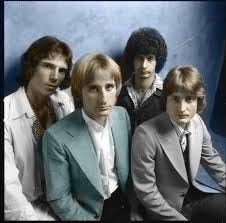
LA area
The Los Angeles area was a new wave hotbed, boasting heavyweights like the Go-Gos and the Missing Persons. But let’s focus on a couple of smaller acts which frequented smaller new wave-friendly venues like the Whisky and the Roxy.
20/20
Archetype: Power-Pop and Skinny Tie Brigade
20/20, like Chicago’s the Kind, played a power-pop-inflected brand of new wave reminiscent of the Knack (and yes, they wore skinny ties!). Perhaps because of their LA base, their sound was a little brighter than the Kind. Despite having a radio-friendly vibe, critical praise, and an airplay boost by LA radio station KROQ, 20/20 only kissed the bottom of the Billboard 100 in the US. That being said, they had the cult anthem Yellow Pills, which reminds me of everything I like about the Cars with their excellent synth flourish timing, tight and bright guitar riffs. Their single Cheri delivers more of the same goodness. Nuclear Boy showed depth and range lyrically, and its theme of nuclear anxiety would have fit in perfectly in my article about new wave and the Cold War. Decades later, 20/20 have a well-deserved rep for being a “great lost new wave band”.
20/20 - Yellow Pills (listen on Spotify)
Gary Myrick
Archetype: Power-Pop and Skinny Tie Brigade
Gary Myrick, an Texas expatriate living in LA, gave his brand of new wave a smoky, Tex-Mex vibe. This drew comparisons to fellow southern Californian band Wall of Voodoo. Myrick blended twangy rockabilly riffs with new wave urgency. Nationally, he was a one-hit wonder with the hook-filled She Talks in Stereo; a lot of American Gen-Xers will know this one thanks to MTV airplay and its inclusion in the Valley Girl soundtrack. Despite the roots rock vibe, Gary Myrick, along with his backing band the Figures, performed live shows with the intensity of punkers like the Sex Pistols and the Clash. After his debut, Myrick gradually used more synths, as heard on 1983’s Guitar, Talk, Love & Drums.
Gary Myrick - She Talks in Stereo (listen on Spotify)
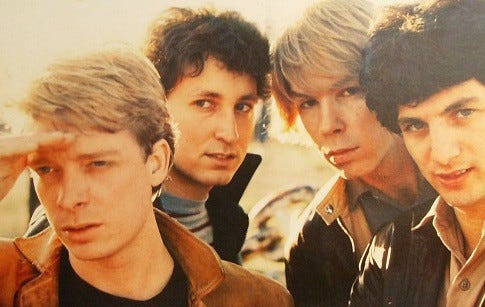
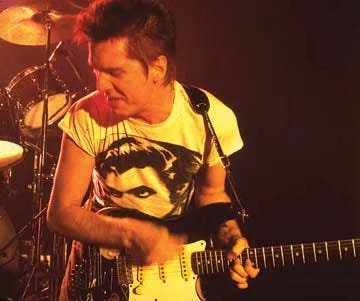
Minneapolis area
The Twin Cities’ new wave scene grew out of a hearty punk and power-pop community, but drew in other influences as well.
The Suburbs
Archetype: Art-Pop Eccentrics
The Suburbs infused their sound with danceable funk stylings, giving Minneapolis something to groove to throughout the late ‘70s and ’80s. 1983’s Love is the Law was the most beloved - a local radio staple when it came out. When the Twins won the World Series in 1987, this song was played at the celebrations (take that, Prince!). An earlier single Rattle My Bones has post-punk nerves and repetition that reminds me a lot of New Wave Revivalists Franz Ferdinand. Heart of Gold earned some MTV airplay, but the Suburbs were hard to pigeonhole. For example, Rainy Days was sincere, romantic, lush, and melancholy, while Cows features absurdist humor and cow sound effects for good measure. Frontman Chan Poling had a flamboyant stage persona (complete with colorful suits and face paint). They later joined Prince in the Minnesota Music Hall of Fame.
The Suburbs - Love is the Law (listen on Spotify)
The Flamin’ Ohs
Archetype: Art-Pop Eccentrics
The Flamin’ Ohs drew on Minneapolis’ strong power-pop scene. While not as well-known as the Suburbs, the Ohs made some waves with I Love Romance, with a music video directed by Chuck Statler (he also did Panorama, Cruel to be Kind ($), and several by Devo and Elvis Costello). Their songs recall early cuts by the Jags and the Records—tight, tuneful, and built for a barroom crowd that just discovered skinny ties. For a slower change of pace, try Everyday. Perhaps because of their deep Midwestern base, the Ohs drew from heartland rock (not done often with new wave) and a splash of Springsteen for good measure. In the spirit of power-pop, the Ohs loved big choruses. The Flamin’ Ohs had a scrappy, everyman charm—equal parts heartland grit and glam flashes, with just enough swagger to break out of the Midwestern bar scene. Their live sets were energetic and no-frills, driven by pounding drums, hooky choruses, and the sense that they were playing like their lives depended on it.
The Flamin' Ohs - I Remember Romance (listen on Spotify)
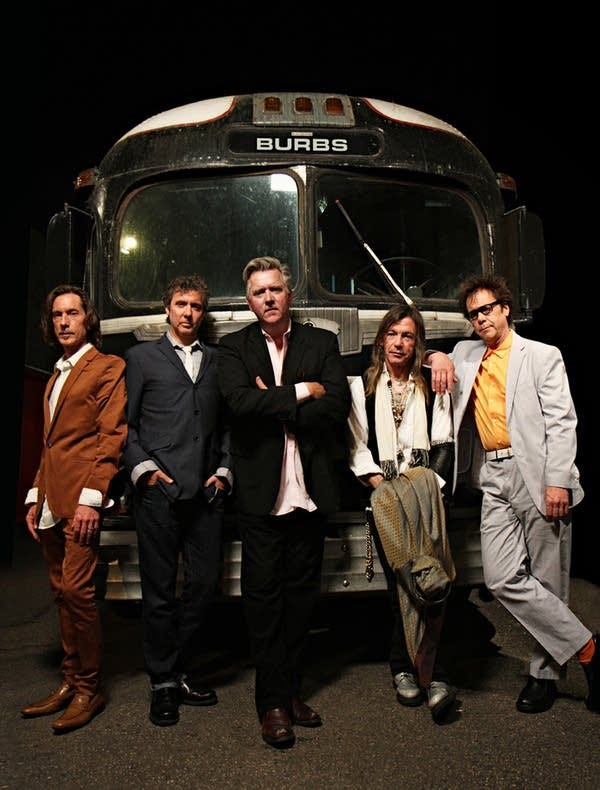
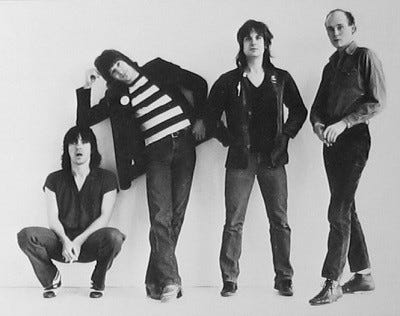
Outro
These six bands prove that new wave wasn’t one uniform sound—it had regional color, underground flair, and eccentric depth far beyond the household names. From warped art-pop to power-pop precision, something here still resonates. And honestly, digging into their music made me wonder what other local new wave heroes are waiting to be rediscovered. If you’re up for it, this rabbit hole has a great soundtrack. I’ll meet you at the next scene.
Enjoy our playlist of these underground acts!



